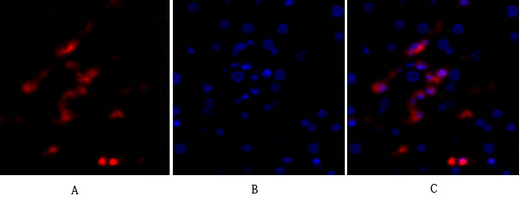

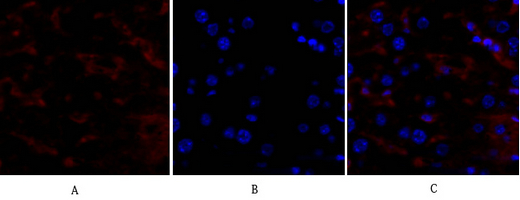
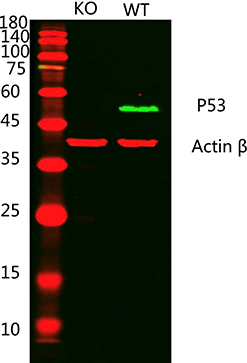
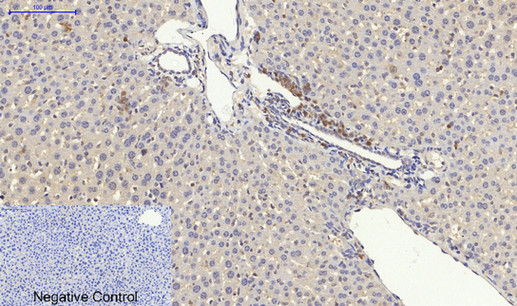
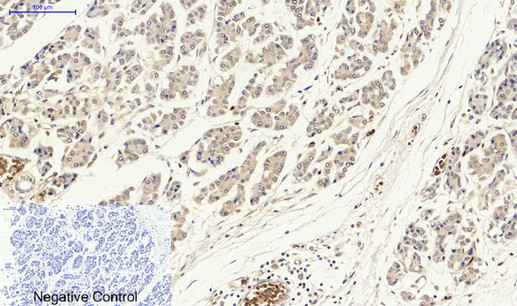
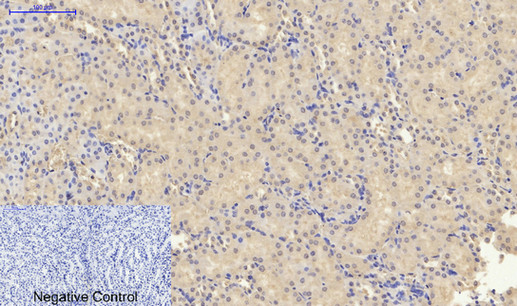
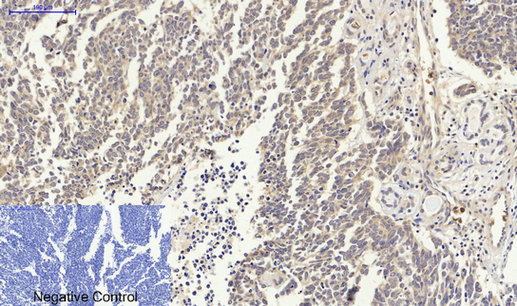
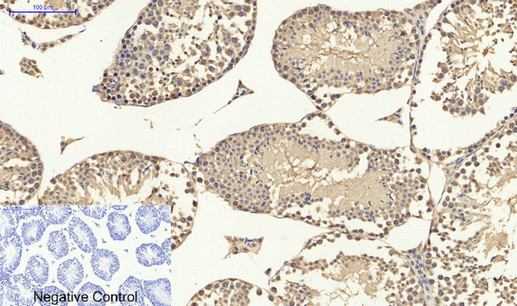
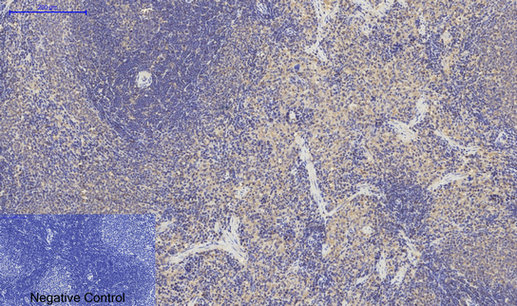
| WB | 咨询技术 | Human,Mouse,Rat |
| IF | 咨询技术 | Human,Mouse,Rat |
| IHC | 1/100-1/300 | Human,Mouse,Rat |
| ICC | 1/200-1/1000 | Human,Mouse,Rat |
| FCM | 咨询技术 | Human,Mouse,Rat |
| Elisa | 咨询技术 | Human,Mouse,Rat |
| Aliases | Tumor suppressor p53; Phosphoprotein p53; Antigen NY-CO-13; TP53; |
| Entrez GeneID | 7157; |
| Host/Isotype | Rabbit IgG |
| Antibody Type | Primary antibody |
| Storage | Store at 4°C short term. Aliquot and store at -20°C long term. Avoid freeze/thaw cycles. |
| Species Reactivity | Human,Mouse,Rat |
| Immunogen | Peptide sequence around aa.13~17 (P-L-S-Q-E) derived from Human p53. |
| Formulation | Purified antibody in PBS with 0.05% sodium azide,0.5%BSA and 50% glycerol. |
+ +
以下是关于p53(Ab-15)抗体的3篇模拟参考文献示例(仅供参考,实际需查阅真实文献):
1. **文献名称**:*"Detection of mutant p53 protein in human carcinomas using monoclonal antibody Ab-15"*
**作者**:Smith A, et al.
**摘要**:该研究利用p53(Ab-15)单克隆抗体,通过免疫组化技术验证了其在多种癌症组织(如乳腺癌、结直肠癌)中特异性识别突变型p53蛋白的能力,并与野生型p53的检测结果进行了对比分析。
2. **文献名称**:*"Phosphorylation-dependent regulation of p53 activity by Ab-15 antibody in DNA damage response"*
**作者**:Chen L, et al.
**摘要**:文章揭示了p53在Ser15位点的磷酸化修饰对其功能调控的作用,使用p53(Ab-15)抗体通过Western blot和免疫沉淀实验,证实了该抗体对磷酸化p53的高亲和力及其在DNA损伤信号通路研究中的应用价值。
3. **文献名称**:*"Validation of p53(Ab-15) for immunohistochemical staining in formalin-fixed paraffin-embedded tissues"*
**作者**:Wang H, et al.
**摘要**:本研究系统验证了p53(Ab-15)抗体在福尔马林固定石蜡包埋(FFPE)组织中的适用性,优化了抗原修复条件,并证明其在临床病理诊断中可作为突变p53的可靠标记物。
---
**注**:以上文献为模拟示例,实际引用需通过PubMed、Google Scholar等平台检索真实文献(可尝试关键词:p53 antibody Ab-15、clone Ab-15 p53)。
The p53(Ab-15) antibody is a monoclonal antibody specifically designed to detect the human tumor suppressor protein p53. encoded by the TP53 gene. p53 plays a critical role in regulating cell cycle arrest, DNA repair, apoptosis, and genomic stability in response to cellular stress. Mutations in TP53 are observed in ~50% of human cancers, often leading to loss of wild-type p53 function or accumulation of dysfunctional mutant p53 proteins, which contribute to tumor progression.
The Ab-15 clone recognizes an epitope within the N-terminal transactivation domain (amino acids 20-25) of both wild-type and mutant p53 isoforms. It is widely used in applications such as Western blotting, immunohistochemistry (IHC), and immunoprecipitation (IP) to study p53 expression, localization, and post-translational modifications in cancer research. Validated for use in formalin-fixed, paraffin-embedded (FFPE) tissues, this antibody helps assess p53 status in clinical samples, aiding in cancer diagnosis and prognosis. Its specificity and reliability make it a valuable tool for investigating p53's role in tumor suppression, therapeutic resistance, and cellular stress responses.
×